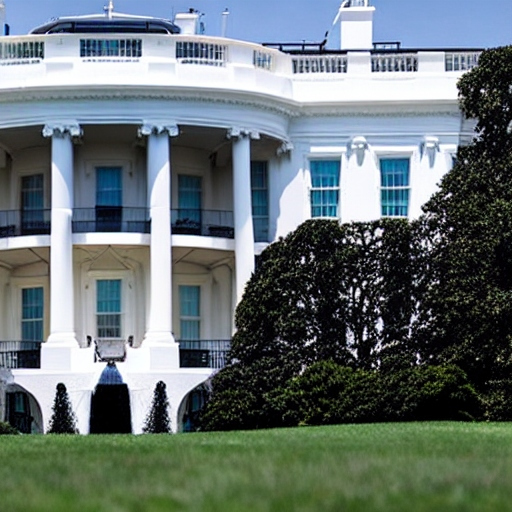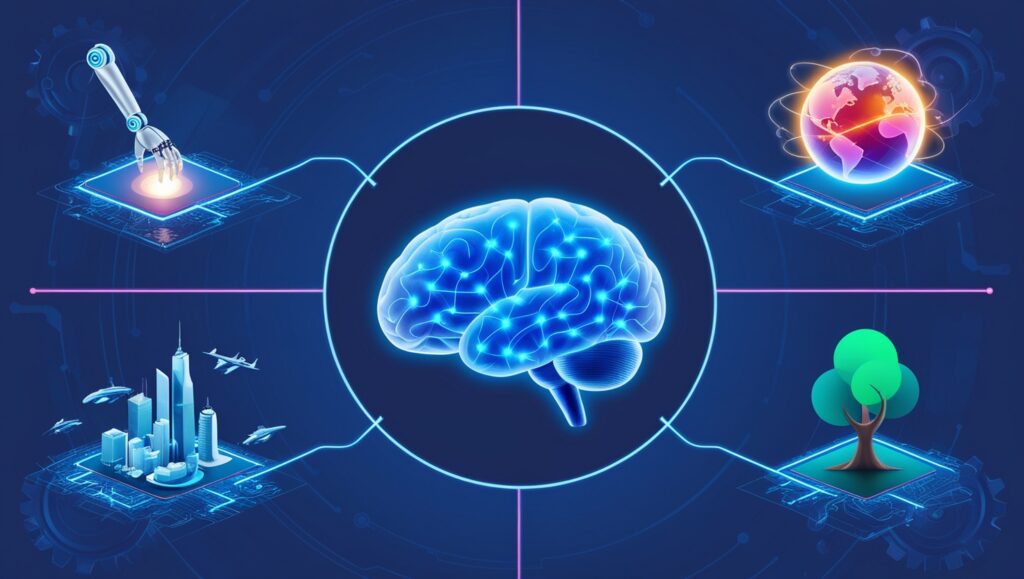In early April, while a staff member typed instructions into ChatGPT, President Joe Biden huddled in the Oval Office with a number of his senior advisors. The prompt read: Summarize the Supreme Court’s decision in New Jersey v. Delaware and convert it into a Bruce Springsteen song.
The decision, which focused on rights to the Delaware River, also granted his home state of Delaware a claim to Springsteen, Biden had joked with The Boss a few weeks previously at the National Medal of Arts presentation. The AI chatbot immediately started writing the songs in Springsteen’s manner right in front of the president.
The president was astounded by ChatGPT as many other Americans who have played with it.
He reminded the staff members present, including his chief of staff Jeff Zients, deputy chief of staff Bruce Reed, and top science adviser Dr. Arati Prabhakar, of what had been obvious inside the West Wing for weeks: AI should be a top priority. The meeting also covered the impact of AI on cybersecurity and jobs.
A few weeks earlier, the ChatGPT explosion catapulted artificial intelligence into the spotlight, sparking a flurry of hearings on Capitol Hill where AI industry experts praised the technology’s revolutionary potential while also highlighting “the risk of extinction from AI.”
The spike in interest in ChatGPT at the White House propelled AI from a low priority to a top one.
In the world of AI policy, this urgency is appreciated. Numerous individuals who have provided advice to the White House on AI policy stated that while the Blueprint for an AI Bill of Rights, released last year, laid a significant foundation, they were concerned that the administration was not giving AI policy enough attention. The same individuals claim that it is now obvious that the White House has moved into a higher gear to meet the occasion.
A National AI Advisory Committee member alluded to a “wake-up call” within the federal government since the explosion of ChatGPT and said, If they had this conversation six months back, the responses would be very different than they are today.
Senior administration officials have been meeting twice to three times a week to advance AI policy work since early this spring, under the direction of the White House chief of staff’s office. This work has focused on addressing AI on a variety of fronts, from misinformation and cybersecurity to economic transformation and equity. During the weekly strategy meetings held on Saturdays with Biden’s closest aides, AI has also started to come up frequently.
Biden met with a group of AI specialists and academics on Tuesday in San Francisco after dropping by a gathering of top AI CEOs at the White House last month to obtain a non-industry perspective on the risks and prospects of AI.
Biden noted that he hopes to learn about the “risks” and “promise” of artificial intelligence and noted that he wants to hear directly from the experts, some of whom are among the top specialists on this subject in the world. He also mentioned the artificial intelligence summit on consumer protection that Vice President Kamala Harris will host in the next month.
Officials claim they have been working rapidly to build the framework for a number of policy initiatives that will be presented this summer, including executive orders, to maximize the impact of current restrictions on AI, harness its potential, and establish new guardrails for the burgeoning, multifaceted technology.
You cannot spend years trying to govern or understand this subject. According to Zients, you must measure time in weeks. In this case, speed is crucial. If one moves too slowly, the technology will catch up to them by the time they act, and they will be behind. In order to maximize the beneficial effect while minimizing any unforeseen repercussions, we must move swiftly and decisively.
Officials are particularly aware of Washington’s historical record of responding slowly to significant technology change, and the early inability to control social media weighs especially big. This time, a number of legislative initiatives are already under way, and the majority of major AI companies are requesting that Washington regulate their sector. However, they have various approaches and objectives.
Senior administration officials agreed that legislation will be required to address some innovative characteristics and challenges coming from AI, including the underlying technology, but they also feel they can and must start forming the regulatory framework through executive action.
According to a senior administration source, among the chores authorities have already started include compiling a thorough list of laws that could be used to regulate AI and determining which areas require the creation of new laws to close any gaps.
Leading AI firms like Google, Microsoft, and OpenAI are expected to release privacy and security commitments by the end of the month, according to a senior administration official. The official added that the federal government will use “appropriate methods to ensure companies live up to these commitments.”
In order to shape the sector, the Office of Management and Budget will take advantage of the federal government’s size as a client by releasing long-awaited guidelines for federal agencies on the usage and acquisition of AI technologies this summer.
Jake Sullivan, the national security adviser, and his staff are working with the G7 to establish AI principles while also creating policies to address cybersecurity concerns linked with AI.
Senior administration officials declined to discuss specifics of additional upcoming executive orders but stated that more moves are expected over the summer.
Prabhakar stated in an interview that it is an urgent concern. It’s extremely focused and active. People are moving more quickly than usual.
Zients, who is well-versed in the IT industry and whose arrival in February coincided with ChatGPT’s boom, has been credited with the White House’s ramp-up by a number of persons acquainted with its operations. He was referred to as a “accelerator” of the initiatives by a senior government official.
It is evident that White House representatives aren’t beginning from blank, but rather building on their 73-page Blueprint for an AI Bill of Rights, which was published in October and which officials have referred to as the foundation for the administration’s approach to AI policy. The National Institute of Standards and Technology of the Department of Commerce is another resource that officials are relying on. It released a risk management framework earlier this year.
This year, Biden signed an executive order urging federal agencies to combat algorithmic discrimination and eliminate bias in artificial technologies employed by the federal government. The administration also committed $140 million to establish new AI research institutions.
According to Suresh Venkatasubramanian, an AI researcher at Brown University who previously worked at the White House’s Office of Science and Technology Policy until last summer, Chat GPT “democratized the fear” and “spread the concerns much more clearly and broadly in a way that individuals who have been paying close attention to this were aware of, but not the general public. Once that occurred, he believes that everyone – including Congress and the White House – started thinking intensely about this.
Biden has made direct reference to this anxiety when he told AI leaders who met with Harris and other White House officials last month that what they are doing has both immense potential and enormous risk.
At a news conference earlier this month, Biden stated that he does not believe there has ever been a technical change with such fundamental potential in the history of human endeavor. It is astonishing. It is mind-boggling.








